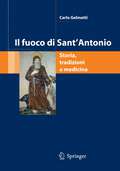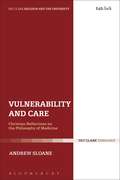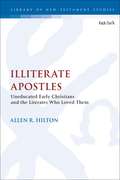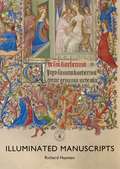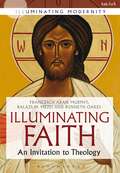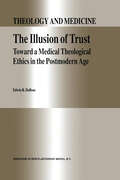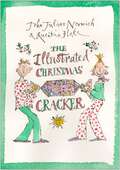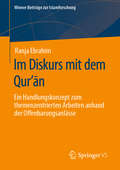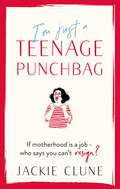- Table View
- List View
Il fuoco di Sant'Antonio: Storia, tradizioni e medicina
by Carlo GelmettiIl libro descrive la storia di Sant'Antonio Abate, il grande taumaturgo ed il fondatore del monachesimo cristiano. Molto prima che ciò fosse una pratica comune tra i fedeli, egli praticò l’ascetismo nel deserto ad imitazione di Cristo e le sue tentazioni demoniache descritte nella biografia scritta da Sant’Atanasio hanno costituito il tema favorito di molti pittori ed ispirato "La Tentation de Saint Antoine" di Gustave Flaubert. Padrone del fuoco e protettore degli animali, viene spesso raffigurato con accanto una fiamma ed un maialino, ragione per cui è anche chiamato "Sant’Antonio del porcello". Egli era il santo prediletto dai contadini ed inoltre patrono dei cestai, dei porcai, dei ceramisti e di molte altre professioni, ma era famoso soprattutto per le sue capacità curative sì da divenire il santo taumaturgo per eccellenza. Pertanto, dal Medio Evo al XIX era invocato per curare le più dolorose piaghe che affliggevano l’umanità, soprattutto quelle più devastanti che furono chiamate "Fuoco di Sant’Antonio". Questo termine includeva molte malattie completamente diverse tra loro, ma che avevano in comune solo un dolore intollerabile. Tra queste, l’ergotismo, l’eresipela e l’herpes zoster sono i tre disturbi più importanti riconosciuti nei secoli. Ancora oggi, in Italia, l’herpes zoster è comunemente chiamato "Fuoco di Sant’Antonio". Di questa affascinante mistura di religione e medicina, di arte e tradizioni si legge in queste righe.
Il fuoco di Sant'Antonio: Dai Misteri Eleusini all'LSD
by Carlo GelmettiIl fuoco di Sant’Antonio è una malattia, certo! Ma quale? Per noi Italiani è sicuramente l’Herpes zoster; ma è sempre stato così? Ebbene, no! Sant’Antonio Abate aveva la fama di taumaturgo e guaritore già in vita, nonostante si fosse ritirato in un remoto deserto. Così, quando le sue spoglie arrivarono in Europa dopo l’anno Mille, tutti coloro che soffrivano di malattie dolorose e urenti, imploravano Sant’Antonio che li guarisse da quel "fuoco" che li tormentava. Ma quali erano queste malattie così dolorose? Le antiche cronache sono spesso troppo succinte o troppo romanzate per orientarci nella diagnosi ma erisipela, sifilide, ergotismo hanno fatto certamente buona compagnia allo zoster. L’ergotismo, soprattutto, era una malattia terrorizzante perché compariva ad ondate imprevedibili e, come la peste, colpiva i virtuosi come i viziosi, scardinando l’interpretazione allora dominante, del dolore come conseguenza del peccato. Come se non bastasse, l’ergotismo non solo provocava terribili sofferenze ma spesso anche stati di confusione mentale e di delirio che erano (questi sì!) sicuramente attribuiti al demonio. Bisogna aspettare il XVIII secolo e l’età dei Lumi per mandare in soffitta le superstizioni che infestavano la medicina ed allora l’ergotismo si rivela essere non più una maledizione ma una solo una malattia, un effetto del consumo di pane nero alloiato Lo studio degli allucinogeni e la scoperta dell’LSD nel XX secolo, mettono la parola fine all’interpretazione mistico-religiosa di alcune patologie e gettano inaspettatamente nuova luce su quello che fu il segreto meglio custodito dell’Antichità: il culto dei Misteri Eleusini. In questo libro, la storia del fuoco di Sant’Antonio di dipana dai racconti medioevali sino all’odierna virologia e suggerisce che la curiosità e la scienza sono l’unico antidoto contro la superstizione e il mistero. Un filo rosso unisce i Misteri Eleusini al Fuoco di Sant’Antonio: questo filo è l’LSD. La molecola è la stessa ma il contorno è molto diverso e, di sicuro, molto appassionante.
(Il)liberal Europe: Islamophobia, Modernity and Radicalization
by Natalie J. Doyle Irfan AhmadEurope sees itself as embodying the ideals of modernity, especially in relation to democracy and the respect for human rights. Faced on the one hand with the need for public recognition of a new population of Muslim identity, and the threat of violent radicalization on the other, Europe is falling prey to the politics of fear and is tempted to compromise on its professed ideals. Reflecting on the manifestations and causes of the contemporary fear of Islam gaining ground in contemporary Europe, as well as on the factors contributing to the radicalization of some Muslims, (Il)liberal Europe: Islamophobia, Modernity and Radicalization offers a diversity of perspectives on both the challenges to social cohesion, and the danger of Islamophobia encouraging a spiral of co-radicalization. Combining empirical studies of several European countries with a comparative account of India and Europe, the book analyzes vital issues such as secularity, domophilia, de-politicization, neo-nationalism, the European unification project and more. Spanning a variety of disciplinary approaches, the volume offers novel insights into the complex landscape of identity politics in contemporary Europe to widen the scope of intellectual inquiry. This book was originally published as a special issue of Politics, Religion & Ideology.
(Il)liberal Europe: Islamophobia, Modernity and Radicalization
by Natalie J. Doyle and Irfan AhmadEurope sees itself as embodying the ideals of modernity, especially in relation to democracy and the respect for human rights. Faced on the one hand with the need for public recognition of a new population of Muslim identity, and the threat of violent radicalization on the other, Europe is falling prey to the politics of fear and is tempted to compromise on its professed ideals. Reflecting on the manifestations and causes of the contemporary fear of Islam gaining ground in contemporary Europe, as well as on the factors contributing to the radicalization of some Muslims, (Il)liberal Europe: Islamophobia, Modernity and Radicalization offers a diversity of perspectives on both the challenges to social cohesion, and the danger of Islamophobia encouraging a spiral of co-radicalization. Combining empirical studies of several European countries with a comparative account of India and Europe, the book analyzes vital issues such as secularity, domophilia, de-politicization, neo-nationalism, the European unification project and more. Spanning a variety of disciplinary approaches, the volume offers novel insights into the complex landscape of identity politics in contemporary Europe to widen the scope of intellectual inquiry. This book was originally published as a special issue of Politics, Religion & Ideology.
The Ilkhanid Book of Ascension: A Persian-Sunni Devotional Tale (British Institute of Persian Studies)
by Christiane GruberThe traditional account of the Prophet Muhammad's ascension (micraj) has inspired generations of writers and storytellers from the beginnings of Islam until today. Prompted by a number of vague verses in the Qur'an, hadith transmitters, biographers, exegetes and historians all attempted to offer a clearer picture of the exact nature and circumstances of Muhammad's heavenly ascent. By the tenth century, narratives describing Muhammad's encounter with prophets and angels, his colloquy with God and his visits of heaven and hell lead to the formation of the 'Book of Ascension' (Micrajnama), a novelizing and engaging literary genre most commonly written in Arabic and Turkic dialects. Christiane Gruber here provides a critical analysis and English translation of an extremely rare 'Book of Ascension' text preserved in manuscript form. The text was written in Persian language by an anonymous author and dates from the Ilkhanid period (1256-1353). The English translation is presented alongside the original Persian text. The text provides evidence for the spread of ascension narratives in Persian lands during the medieval period while also shedding new light on the earliest extant series of Islamic ascension paintings, dated c.1317-35, which are reproduced here in full colour. In this 'Book of Ascension', Muhammad's dialogues with angels and prophets in the heavens take the shape of oral prayers in Arabic. The text also stresses at various turns the righteousness of the Sunni community. The narrative therefore takes the shape of a devotional tale that appears to have been used to promote adherence, and encourage conversion, to Sunni Islam - a character that may have extended to the ascension paintings as well. The Ilkhanid Book of Ascension thus provides fascinating insight into the interplay between Islamic bio-apocalyptic literature, artistic practices and missionary efforts aimed at promoting Sunni Islam in Persian lands during Ilkhanid rule. It therefore represents a significant contribution to the fields of Medieval Middle Eastern History, Islamic Studies and Art History.
I'll Be Home for Christmas and One Golden Christmas: I'll Be Home For Christmas / One Golden Christmas (Mills And Boon Love Inspired Ser.)
by Lenora WorthChristmas bells and wedding bells chime in these classic tales by Lenora Worth I'll Be Home For Christmas
I'll Be Home for Christmas Movies: The Deck the Hallmark Podcast's Guide to Your Holiday TV Obsession
by Brandon Gray Daniel Thompson Daniel Pandolph Alonso DuraldeI'll Be Home for Christmas Movies is the unofficial fan guide to Hallmark holiday movies, from the creators of the wildly popular Deck the Hallmark podcast. Hosts and best friends Brandon Gray, Daniel "Panda" Pandolph, and Dan Thompson share reviews that make you feel like you're watching these holiday favorites with your best buds, discussing warm Christmas feelings and absolutely bonkers plot twists with equal enthusiasm. And thanks to original interviews with the movies' stars and creators, fans will find out insider information on the making of the movies and learn answers to pressing questions: Why do the lead characters keep coming down with amnesia? Why do so many female stock brokers and lawyers find themselves forced to plan parties? And do all of the stories take place within something called the "Kennyverse"?To complete the perfect Christmas package, the book is also chock-full of ideas for hosting your own holiday movie-watching party, complete with delicious recipes. Featuring dozens of full-color photos throughout, I'll Be Home for Christmas Movies is as cozy and sparkly as the movies themselves.
Illiterate Apostles: Uneducated Early Christians and the Literates Who Loved Them (The Library of New Testament Studies #541)
by Allen HiltonAllen Hilton examines how pagan critics ridiculed the early Christians for being uneducated, and how a few literate Christians took up pen to defend the illiterate members of their churches. Hilton sheds light on the peculiarity of this “defense”, in which the authors openly admit that the critics have the facts on their side, noting that the Book of Acts even calls two of its heroes, Peter and John, illiterates. Why did the authors of these biblical texts, intent on presenting Christianity in a positive light, volunteer such a negative detail? The answer to this question reveals a fascinating social exchange that first surrounded education levels in antiquity, and proceeded to make its way into the New Testament. This volume provides context for pagan education as opposed to early Christian illiteracy – touching upon the methods of ancient learning and the relationship between Christian and pagan schools – and analyses the 'uneducated virtue' of the Apostles. Hilton provides a useful window onto the social construction of ancient education and ushers readers into the everyday experience of ancient Christians, and those who disdained and defended them.
Illiterate Apostles: Uneducated Early Christians and the Literates Who Loved Them (The Library of New Testament Studies)
by Allen HiltonAllen Hilton examines how pagan critics ridiculed the early Christians for being uneducated, and how a few literate Christians took up pen to defend the illiterate members of their churches. Hilton sheds light on the peculiarity of this “defense”, in which the authors openly admit that the critics have the facts on their side, noting that the Book of Acts even calls two of its heroes, Peter and John, illiterates. Why did the authors of these biblical texts, intent on presenting Christianity in a positive light, volunteer such a negative detail? The answer to this question reveals a fascinating social exchange that first surrounded education levels in antiquity, and proceeded to make its way into the New Testament. This volume provides context for pagan education as opposed to early Christian illiteracy – touching upon the methods of ancient learning and the relationship between Christian and pagan schools – and analyses the 'uneducated virtue' of the Apostles. Hilton provides a useful window onto the social construction of ancient education and ushers readers into the everyday experience of ancient Christians, and those who disdained and defended them.
Illness and Immortality: Mantra, Mandala, and Meditation in the Netra Tantra
by Patricia SauthoffIllness and Immortality examines a medieval Sanskrit text, the Netra Tantra, which is devoted to health and healing through a yogic practice dedicated to the chanting of mantras, the building of mandalas, and meditation. Patricia Sauthoff examines the role of such ritual elements in rites to alleviate illness and death. She includes analysis of the various forms of the deity Amrtesa or Mrtyuñjaya (Conqueror of Death), the nature of mantra, and the relationship between the tantric practitioner and the patient. This work explores what is meant by immortality within the medieval context and how one goes about attaining it. It asks how ritual alleviates illness, what role the deity plays in health and healing, and finally who has access to the rites described within the text. Central to this study is the conception of a body vulnerable to demons and reliant on deities for continued existence, and how the three yogic bodies (sthula, suksma, and para) play a role in physical and spiritual well-being. Featuring new translations of large sections of the Netra Tantra, the book offers readers various points of entry into the text so that tantric practitioners and scholars alike can access the influential and important concepts and practices found within this long-revered but under-studied work.
Illness and Immortality: Mantra, Mandala, and Meditation in the Netra Tantra
by Patricia SauthoffIllness and Immortality examines a medieval Sanskrit text, the Netra Tantra, which is devoted to health and healing through a yogic practice dedicated to the chanting of mantras, the building of mandalas, and meditation. Patricia Sauthoff examines the role of such ritual elements in rites to alleviate illness and death. She includes analysis of the various forms of the deity Amrtesa or Mrtyuñjaya (Conqueror of Death), the nature of mantra, and the relationship between the tantric practitioner and the patient. This work explores what is meant by immortality within the medieval context and how one goes about attaining it. It asks how ritual alleviates illness, what role the deity plays in health and healing, and finally who has access to the rites described within the text. Central to this study is the conception of a body vulnerable to demons and reliant on deities for continued existence, and how the three yogic bodies (sthula, suksma, and para) play a role in physical and spiritual well-being. Featuring new translations of large sections of the Netra Tantra, the book offers readers various points of entry into the text so that tantric practitioners and scholars alike can access the influential and important concepts and practices found within this long-revered but under-studied work.
Illuminated Manuscripts (Shire Library)
by Richard HaymanIlluminated manuscripts are among the most beautiful, precious and mysterious works of Western art. Before the printing press was invented, books were produced by hand and their illustration using brightly coloured pigments and gold embellishments was a labour of love and an act of piety in itself. The results are stunning. The works emanating from the scriptoria of monasteries were mainly religious texts, including illuminated bibles, psalters, and works for private devotion known as books of hours. Illuminated Manuscripts describes the origin and history of illumination in the Middle Ages, covering the artists and their techniques, and the patrons who commissioned them. It explains the subject matter found in medieval works, such as saints and Bible stories and the use of ornamental flourishes, and is illustrated with many fine examples of the genre including the Lindisfarne Gospels and the Book of Kells.
Illuminated Manuscripts (Shire Library #841)
by Richard HaymanIlluminated manuscripts are among the most beautiful, precious and mysterious works of Western art. Before the printing press was invented, books were produced by hand and their illustration using brightly coloured pigments and gold embellishments was a labour of love and an act of piety in itself. The results are stunning. The works emanating from the scriptoria of monasteries were mainly religious texts, including illuminated bibles, psalters, and works for private devotion known as books of hours. Illuminated Manuscripts describes the origin and history of illumination in the Middle Ages, covering the artists and their techniques, and the patrons who commissioned them. It explains the subject matter found in medieval works, such as saints and Bible stories and the use of ornamental flourishes, and is illustrated with many fine examples of the genre including the Lindisfarne Gospels and the Book of Kells.
Illuminating Faith: An Invitation to Theology (Illuminating Modernity)
by Francesca Aran Murphy Balázs M. Mezei Kenneth OakesThis textbook will give students a clear understanding of the connection between faith and reason. Illuminating Faith gives students a clear and accessible introduction to some of the major ways faith and the relationship between faith and reason have been understood within Western Christianity. In twenty-six short and easy to digest units it covers different accounts of faith beginning with Scripture, moving through the history of Christian thought, and ending with contemporary views. Along the way it explores some of the decisive theological and philosophy accounts of faith, such as faith seeking understanding, faith and supernatural virtue, faith and skepticism, and faith and science. Yet it also includes significant issues and movements not typically covered in introductory texts, such as documents from church councils, faith as knowledge, assent, and trust in the Protestant scholastics, faith and the heart in pietism, secularized accounts of faith, faith after Auschwitz, and faith and liberation. The goal of each unit is to introduce students to topical issues surrounding the nature of faith, to provide historical background for each topic, and to generate further discussion and reflection on the nature of faith. The result is a well balanced and unique introduction to various understandings of faith. Designed specifically with classroom use in mind, Illuminating Faith includes a glossary of words, an update-to-date bibliography, and each chapter ends with questions for discussion as well as suggestions for relevant reading material.
Illuminating Faith: An Invitation to Theology (Illuminating Modernity)
by Francesca Aran Murphy Kenneth Oakes Professor Balázs M. MezeiThis textbook will give students a clear understanding of the connection between faith and reason. Illuminating Faith gives students a clear and accessible introduction to some of the major ways faith and the relationship between faith and reason have been understood within Western Christianity. In twenty-six short and easy to digest units it covers different accounts of faith beginning with Scripture, moving through the history of Christian thought, and ending with contemporary views. Along the way it explores some of the decisive theological and philosophy accounts of faith, such as faith seeking understanding, faith and supernatural virtue, faith and skepticism, and faith and science. Yet it also includes significant issues and movements not typically covered in introductory texts, such as documents from church councils, faith as knowledge, assent, and trust in the Protestant scholastics, faith and the heart in pietism, secularized accounts of faith, faith after Auschwitz, and faith and liberation. The goal of each unit is to introduce students to topical issues surrounding the nature of faith, to provide historical background for each topic, and to generate further discussion and reflection on the nature of faith. The result is a well balanced and unique introduction to various understandings of faith. Designed specifically with classroom use in mind, Illuminating Faith includes a glossary of words, an update-to-date bibliography, and each chapter ends with questions for discussion as well as suggestions for relevant reading material.
Illuminating Leviticus: A Study of Its Laws and Institutions in the Light of Biblical Narratives
by Calum CarmichaelThe origin of law in the Hebrew Bible has long been the subject of scholarly debate. Until recently, the historico-critical methodologies of the academy have yielded unsatisfactory conclusions concerning the source of these laws which are woven through biblical narratives. In this original and provocative study, Calum Carmichael—a leading scholar of biblical law and rhetoric—suggests that Hebrew law was inspired by the study of the narratives in Genesis through 2 Kings.Discussing particular laws found in the book of Leviticus—addressing issues such as the Day of Atonement, consumption of meat that still has blood, the Jubilee year, sexual and bodily contamination, and the treatment of slaves—Carmichael links each to a narrative. He contends that biblical laws did not emerge from social imperatives in ancient Israel, but instead from the careful, retrospective study of the nation’s history and identity.
Illuminating the Path to Vibrant American Jewish Communities: Linking Data to Policy (Studies of Jews in Society #4)
by Jacob B. UkelesThis book argues that the way to ensure that American Jewish life flourishes is to create vibrant local communities and that the ability to thrive will be won or lost in the trenches of each locality. For every generalization about the Jews of America, one can say, “maybe, but it depends where.” In the United States, Jewish life is up close and personal where local variations on national themes make a huge difference. The author presents case studies using in-depth analysis of data from nine Jewish community studies to illuminate eleven critical American Jewish policy issues. The analysis is used to formulate a range of policy options for different types of communities. This book is for anyone who cares about the future of American Jewry. It should be of particular interest to the lay leaders and professionals who play a role in Jewish nonprofits. It is also of great interest to researchers and students of Jewish studies and Jewish communal service.
The Illusion of Trust: Toward a Medical Theological Ethics in the Postmodern Age (Theology and Medicine #5)
by E.R. DuBoseThis book is about trust and its implications for a medical theological ethics. Beginning with its earliest work, there has been attention to trust running through the bioethics literature in the United States, and much of this discussion has examined its theological elements. Clearly, trust is indispensable when describing the patient-physician relationship, so why is there a need for yet another study? There is no doubt that people generally trust physicians. Traditionally the physician is the patient's fiduciary agent, whose sole obligation is to act only in the patient's best interest. In recent times, however, there is a perception on the part of people within and without health care that physicians have other obligations that compete with their obligation to the patient. If we acknowledge that one price for the successes of technological biomedicine is high in terms of financial cost, another price of Sllccess seems to be distrust, cynicism, and suspicion directed by the public toward the medical profes sion. If this uneasiness is the price society pays for medical success, what is the price of success for the doctor? Because of their role within the social order, physicians have claimed and been granted autonomy, authority, and special status. In return, the profes sion has pledged to serve the well-being and interests of humankind. This fiduciary commitment becomes a taken-for-granted aspect of the physician's identity, both for the physician for whom this dedication is definitional and for the public which expects trustworthy service from this person.
Illusions: The Adventures of a Reluctant Messiah
by Richard BachIn the cloud-washed airspace between the cornfields of Illinois and blue infinity, a man puts his faith in the propeller of his biplane. For disillusioned writer and itinerant barnstormer Richard Bach, belief is as real as a full tank of gas and sparks firing in the cylinders ... until he meets Donald Shimoda - former mechanic and self-described messiah who can make wrenches fly and Richard's imagination soar...In Illusions, the unforgettable follow-up to his phenomenal New York Times bestseller Jonathan Livingston Seagull, Richard Bach takes to the air to discover the ageless truths that give our souls wings: that people don't need airplanes to soar ... that even the darkest clouds have meaning once we lift ourselves above them ... and that messiahs can be found in the unlikeliest places - like hay fields, one-traffic-light midwestern towns, and most of all, deep within ourselves.
The Illustrated Christmas Cracker
by John Julius NorwichFor over forty years, John Julius Norwich has been sending out his Christmas Crackers - a personal collection of quirky quotes and literary odds and ends - to his friends instead of a Christmas card. In The Illustrated Christmas Cracker Quentin Blake has made his own selection of favourite pieces and has illustrated them in his own trademark style. From curious dictionary definitions ('Carphology. Delirious fumbling with the bedclothes,' Concise Oxford Dictionary) and tortuous palindromes ('Live dirt up a side-track carted is a putrid evil') to eighteenth-century accounts of drunken pigs and Benjamin Franklin's account of inventing bifocals, this cracker is stuffed with surprising, offbeat, often hilarious gems. Enlivened by Quentin Blake's witty illustrations, this book is the perfect stocking-filler for the discerning customer.
The Illustrated Dictionary of Hindu Iconography (Routledge Library Editions: Hinduism #6)
by Margaret StutleyIndian art, increasingly popular in the west, cannot be fully appreciated without some knowledge of the religious and philosophical background. This book, first published in 1985, covers all aspects of Hindu iconography, and explains that its roots lie far back in the style of prehistoric art. The dictionary demonstrates the rich profusion of cults, divinities, symbols, sects and philosophical views encompassed by the Hindu religious tradition.
The Illustrated Dictionary of Hindu Iconography (Routledge Library Editions: Hinduism #6)
by Margaret StutleyIndian art, increasingly popular in the west, cannot be fully appreciated without some knowledge of the religious and philosophical background. This book, first published in 1985, covers all aspects of Hindu iconography, and explains that its roots lie far back in the style of prehistoric art. The dictionary demonstrates the rich profusion of cults, divinities, symbols, sects and philosophical views encompassed by the Hindu religious tradition.
The Illustrated Family Bible (PDF)
by Dorling Kindersley Publishing StaffThe whole family will be inspired by the Bible stories in this beautifully illustrated volume. Special features throughout bring new understanding to the texts. Using original text from the New International Version, this Illustrated Family Bible has sold more than 60,000 copies worldwide. It features the most important bible stories of the Old and New Testaments. Chapter and verse references pick out the meaning behind the stories, covering everything from Abraham and the chosen people, to Jesus' early years and the growth of the Church. Superb, colourful artworks convey the drama of the Bible, bringing characters and places to life. Comprehensive background information, including maps and photographs, sets the stories in their social, historical and geographical context. The Illustrated Family Bible offers a great introduction to Bible stories that the whole family can enjoy.
Im Diskurs mit dem Qurʼān: Ein Handlungskonzept zum themenzentrierten Arbeiten anhand der Offenbarungsanlässe (Wiener Beiträge zur Islamforschung)
by Ranja EbrahimDen Schwerpunkt der Forschungsarbeit bildet die Erarbeitung eines pädagogischen Handlungskonzepts, welches in Anlehnung an das ‚Vier-Faktoren-Modell‘ der Themenzentrierten Interaktion (TZI) nach Ruth Cohn und in Zusammenführung mit den qurʼānischen Offenbarungsanlässen generiert ist. Das Hauptziel des Modells ist es, eine barrierefreie Verbindung zwischen den jugendlichen Lebenswelten und dem Qurʼān zu ermöglichen, ohne eine Versiertheit in den Gebieten der qurʼānischen Wissenschaften vorauszusetzen. Jugendliche sollen auf diesem Wege dazu eingeladen werden, qurʼānische Inhalte aus der eigenen Erfahrungswelt aus zu deuten, zu bewerten und einzuordnen und damit aktiv am Fortschritt einer zeit- und ortsgerechten islamischen Theologie und Religionspädagogik zu partizipieren.
I'm Just a Teenage Punchbag: THE BIG NEW COMIC NOVEL FOR A GENERATION
by Jackie Clune'A bloody marvellous read. Horribly familiar, funny, touching, sad, brutally honest ... I recommend you clutch this book to your stained T-shirt and never let it go.' JO BRAND'Obligatory reading for all parents of teenagers!' NIGELLA LAWSON'... terrific. A remarkable blend of hilarity and heartbreak with a really satisfying plot. Being childless never felt so good.' GRAHAM NORTON'Honest, hilarious and painful' WOMAN & HOMEWarning!! This novel may lead you to make rash and life-changing decisions!**Probably don't read if you fear you may be ripe for liberation. Or if you sometimes wee when you laugh...First there was Having It All, then there was Bridget Jones' s Diary and I Don't Know How She Does It. Now there is Teenage Punchbag.I'm Just A Teenage Punchbag is a laugh-out-loud, sob-on-the bus journey through the so-called life of a middle-aged woman.Ciara is mother to three ungrateful, entitled teenagers, is married to steady Martin, a man with hairy udders, and is grieving for her mum who now lives in the wardrobe in a cardboard box from the crematorium. She finds solace in her anonymous blog, and in the daily chats she has with her mum's ashes (often the best conversations she has all day.)Despite the menopause, the invisibility of middle age and the daily self-esteem bashings, courtesy of her kids, Ciara manages to navigate the stormy waters of grief and family life - until her mask slips and she is cast out from the family bosom. She embarks on a mission to fulfil her mum's dying wishes to have her remains sprinkled from the top of the Empire State Building, finding company, distraction and - ultimately - herself in the process.If motherhood is a job - who says you can't resign?
